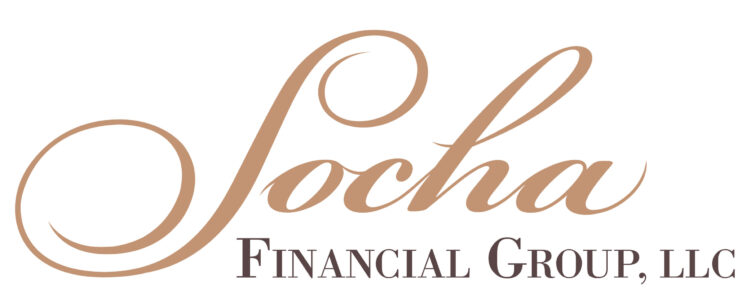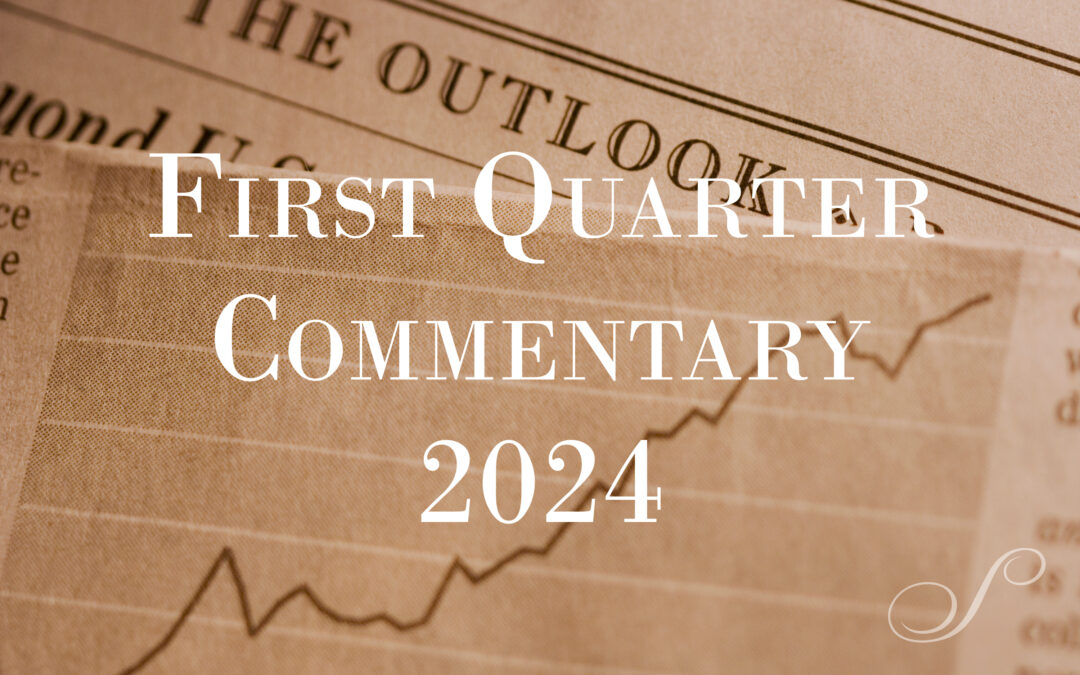The US economy and risk assets generally continued to perform well in the first quarter, while core fixed income underperformed as interest rates rose marginally. This strength fell on the back of a strong and better than expected 2023. The S&P 500 was up 10% in the first quarter, while the NASDAQ 100 was up 8.5%, and the Aggregate bond index was down 1.3%. This stock market performance added $11 Trillion to household wealth last year and $5 Trillion in the first quarter. Consumer spending makes up 68% of the US economy, so this additional wealth creation along with a strong labor market has fostered consumer spending keeping the economy on track.
US economic growth has been robust, growing 3.1% YoY. That is nearly 50% faster than what economists think is the potential the long term growth rate of the US economy. It appears the economy could continue to grow without a resurgence in inflation or a recession. Consumer spending is expected to continue to grow at 1.5% – 2% over the next year as consumer fundamentals are promising. Real wages have increased over the last year, consumer sentiment remains below average but is well off the lows, and household wealth has increased by $16 Trillion due to the rise in the stock market. Government spending appears stable, inventories are in a good place, business fixed investment spending is quite strong because of the incentives offered through the Infrastructure Act, CHIPS Act, Inflation Reduction Act, and to invest in AI. The labor shortage has also forced companies to invest more in capital than labor to produce the same output. Housing looks stable as does trade. Therefore, with consumer and business spending forecast to grow and little dragging it back, we think the economy can have solid growth in the year ahead. The labor market is strong but increased immigration and the highest labor participation rate since 2009 has allowed the labor force to grow without overheating and adding to inflation.
Inflation came in a little higher than expected in the first quarter driven primarily by the shelter and auto insurance components. February headline CPI rose 3.2% YoY. Shelter makes up 34% of CPI and rose at 6.5% meaning that shelter alone accounted for 2.2% of the 3.2% headline number. Auto insurance only accounts for 3% of the overall basket but increased 20%, adding .6% to the overall number. Therefore, these two components alone accounted for 2.8% of the 3.2% overall number. However, they are both lagging indicators due to the way in which the government calculates them and should come down in the months ahead.
The labor market remains strong with the US adding 782,000 jobs in the first quarter or an average of 260,000 jobs a month. March non-farm payrolls rose 303,000 beating the consensus estimate by 89,000. The unemployment rate fell to 3.8% making March the 28th consecutive month unemployment has been below 4%. The Census Bureau forecasts the working age population to grow only by 50,000 a month, leading to the question of where the additional labor supply is coming from. The biggest contributor is an influx of foreign-born workers, which accounts for 60% of the job gains. Migrants are pouring over our southern border and once they do, they are required to apply for asylum, after which they get a notice to appear in court, and after 6 months they are allowed to work until their court hearing. However, since the courts are so backed up it would take them 5 years to hear all the open cases. These migrants take the low-skilled, low-paid jobs, which has resulted in increased output without the upward pressure on wages. The other source of workers has been from an increase in the labor participation rate. While the total labor participation rate remains below the pre-COVID high, if you adjust this for age and only look at workers age 18-64 it is at the highest level since 2009.
The equity market continued its rally from last year in the first quarter with the S&P 500 up 10% and the NASDAQ 100 up 8.5%. Last year the Magnificent 7 (Apple, Amazon, Alphabet, Meta, Nvidia, Microsoft, and Tesla) accounted for 67% of the gains in the S&P 500 while this year they only accounted for 40% of the gains. This is healthy as we are starting to see the market broaden out and not rely on only a handful of stocks. Analysts are looking for 11% increase in earnings this year and 13% increase in 2025. This may be a little aggressive, but it is a positive sign for the market, nonetheless. The Private markets tend to lag the public markets, but we are starting to see signs of them improving. We still hold very little duration (interest rate risk) on the fixed income side of the portfolio which has allowed it to yield a positive return while the Aggregate Bond Index was negative in the first quarter.
In conclusion, we continue to see robust economic growth and the risk factors for a recession have declined. Job growth continues to impress aided by immigration and increased labor participation. Due to a strong economy and higher than expected inflation, the FED is likely to begin its rate cutting cycle later than previously expected. Historically stocks and bonds have done well after the FEDs last rate hike, rather than waiting for the first cut.
All our best,
Michael, Michelle, Jolie and Nina
The Management Team

